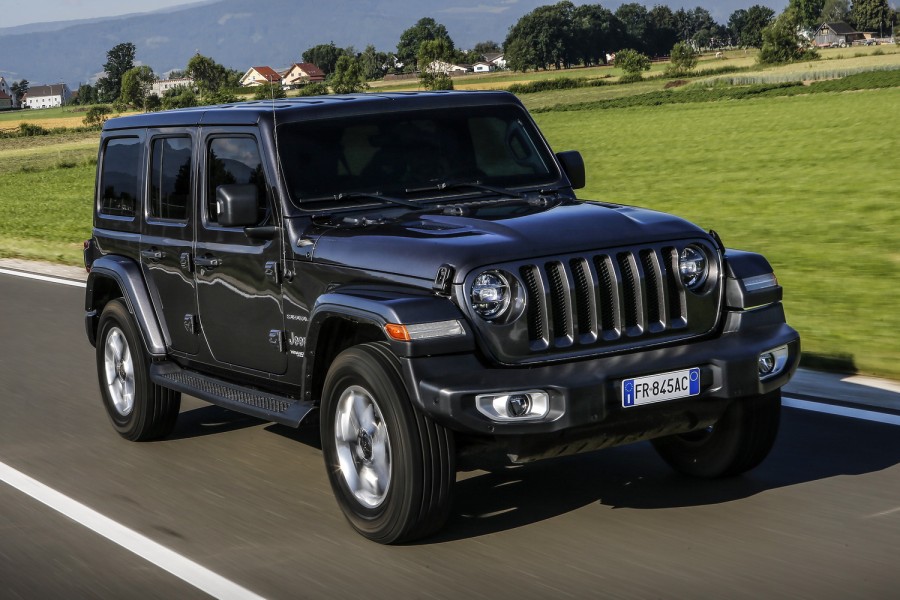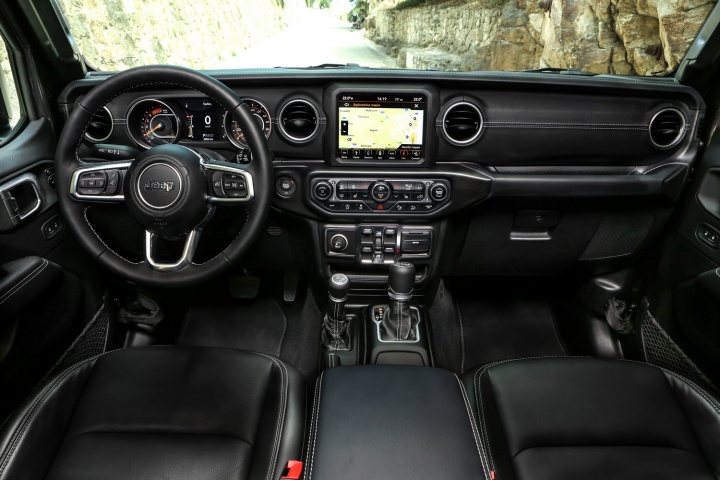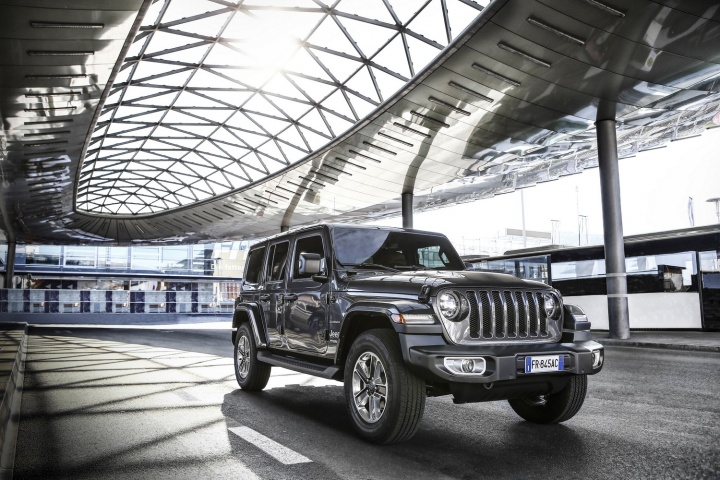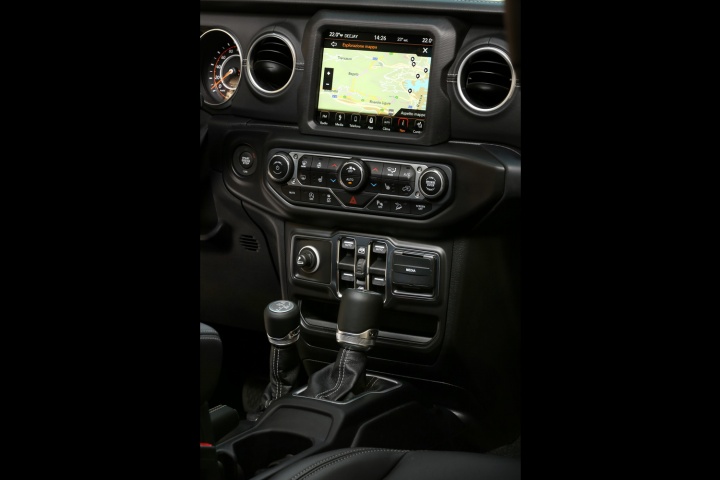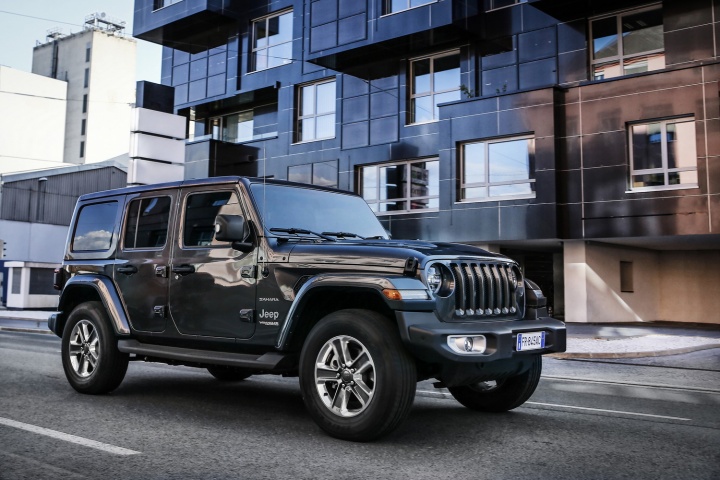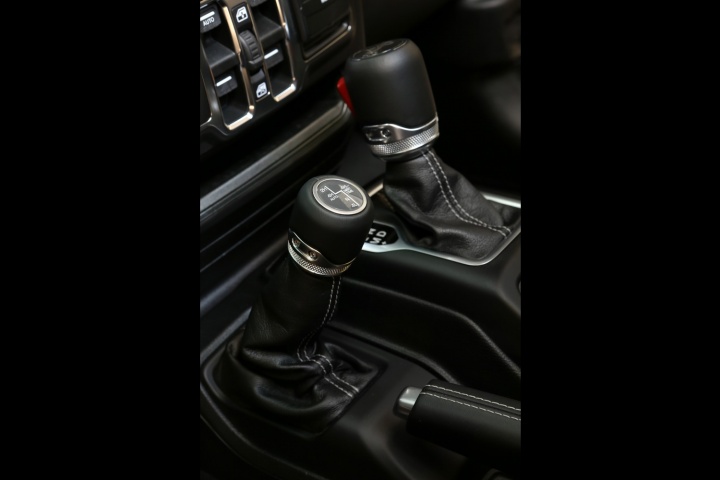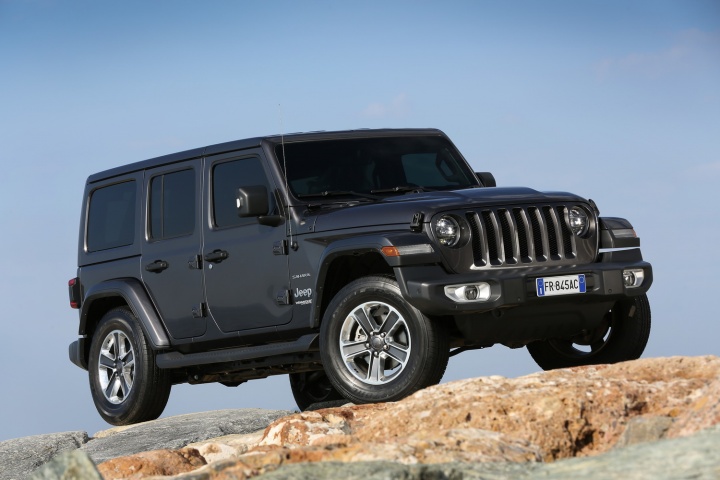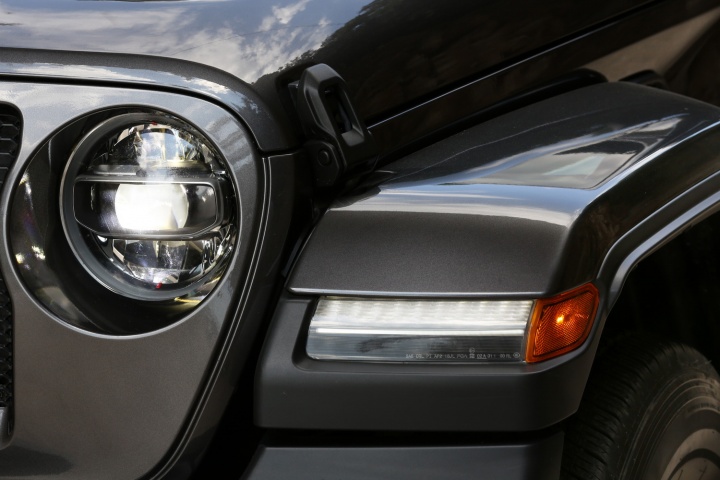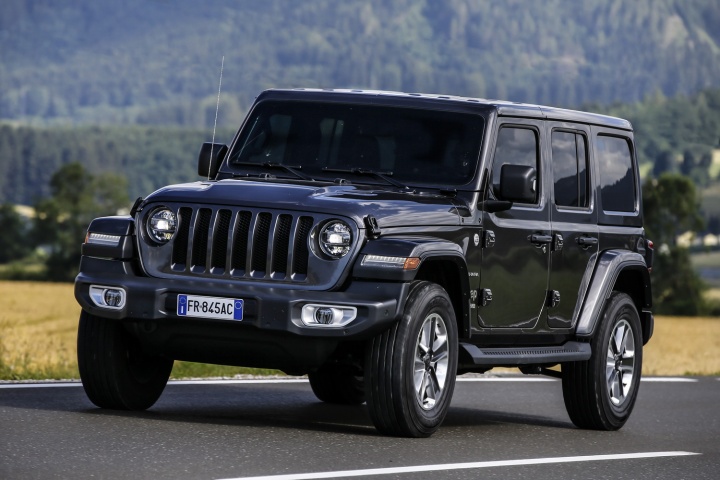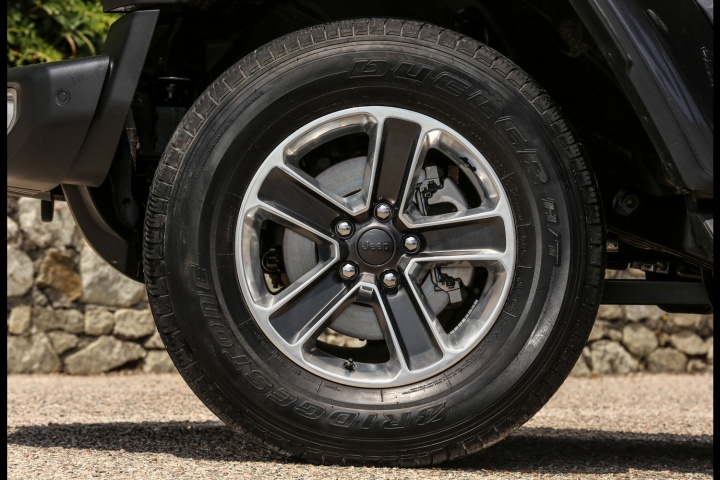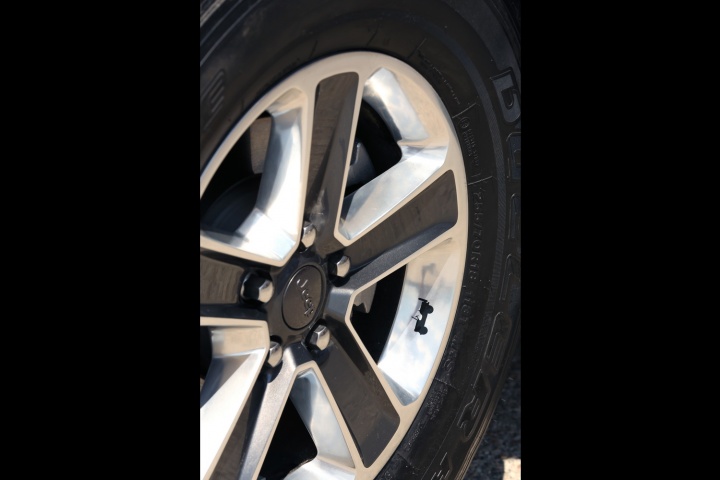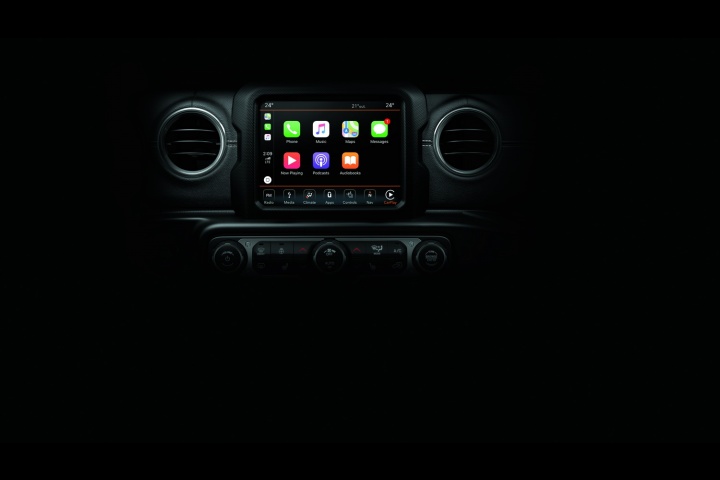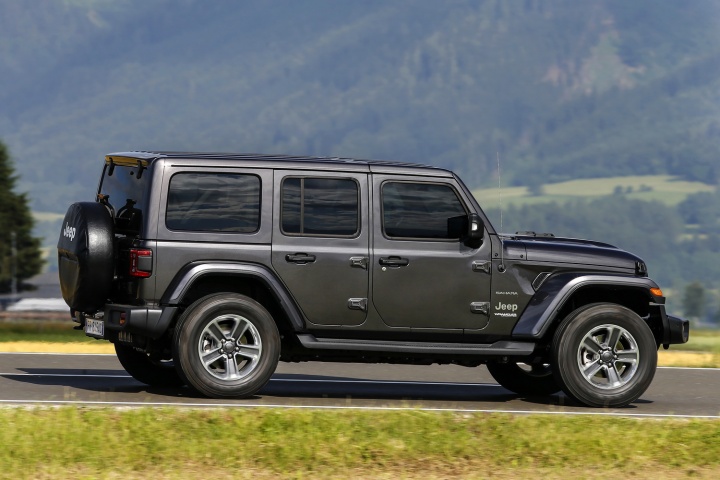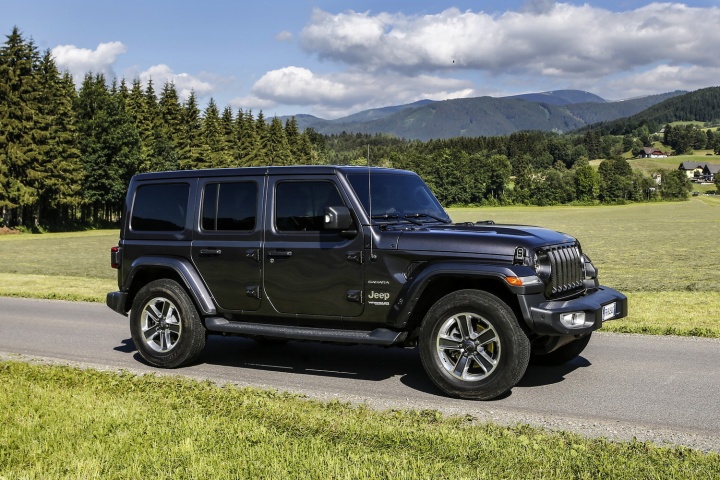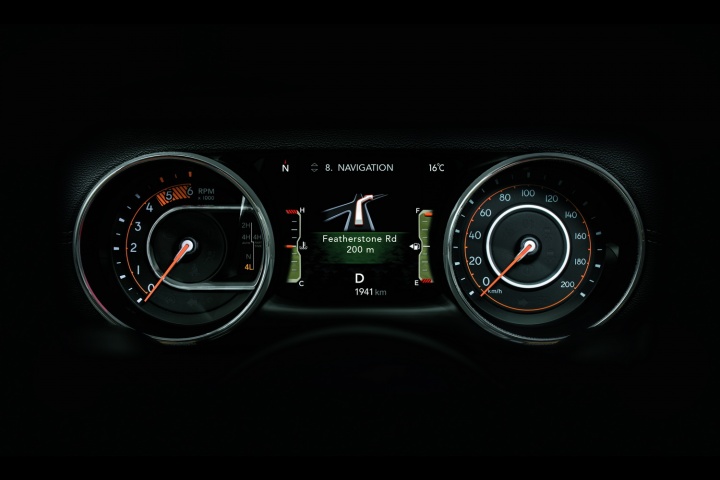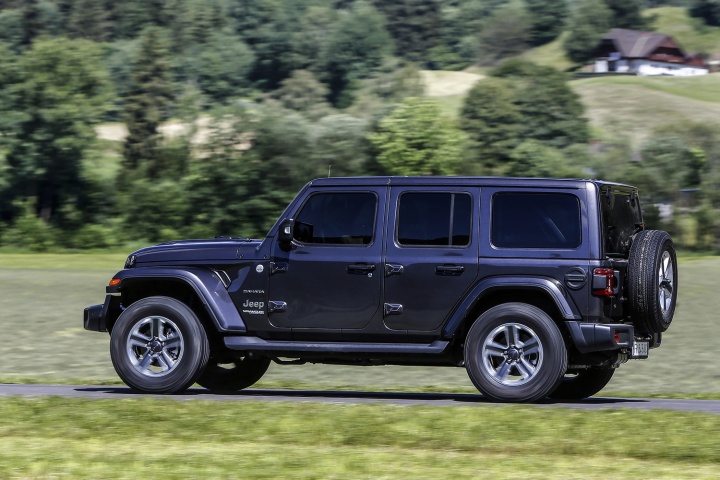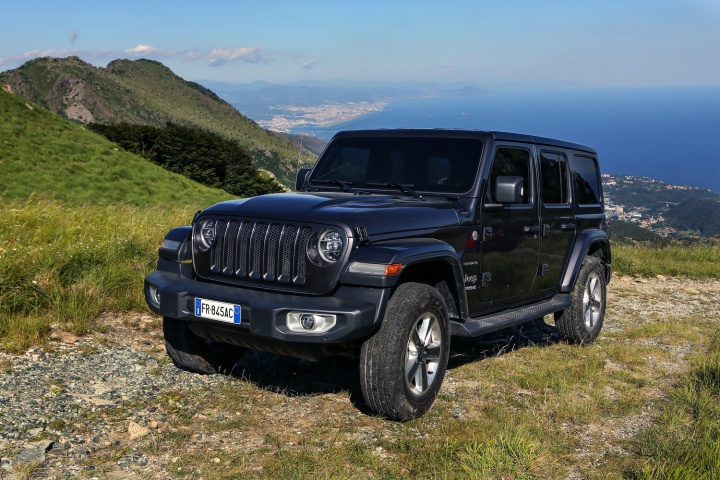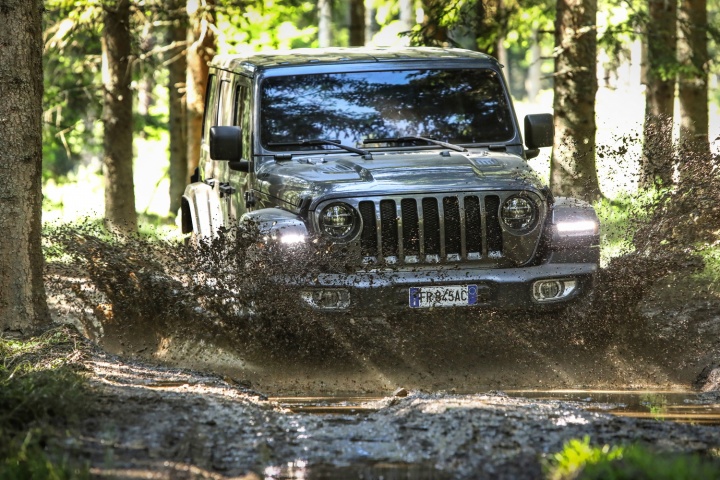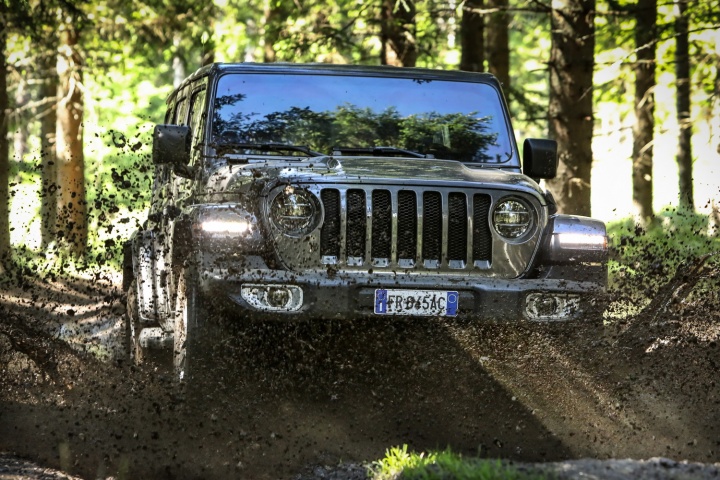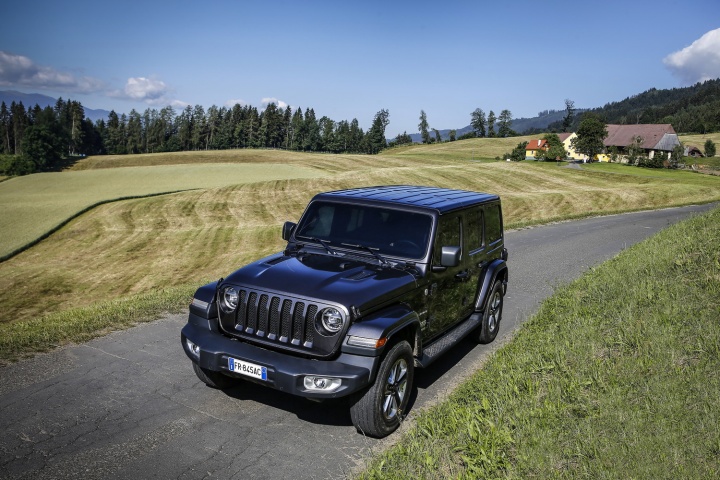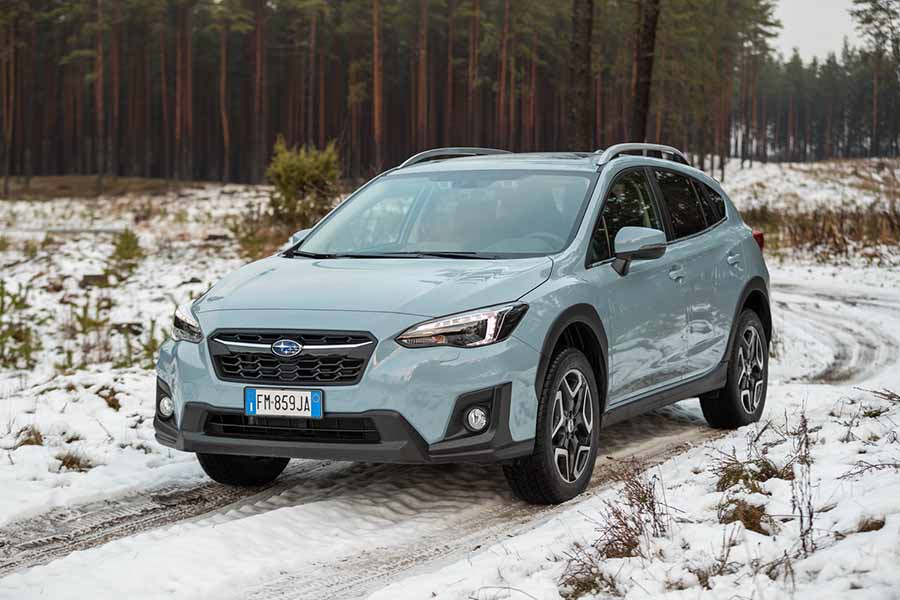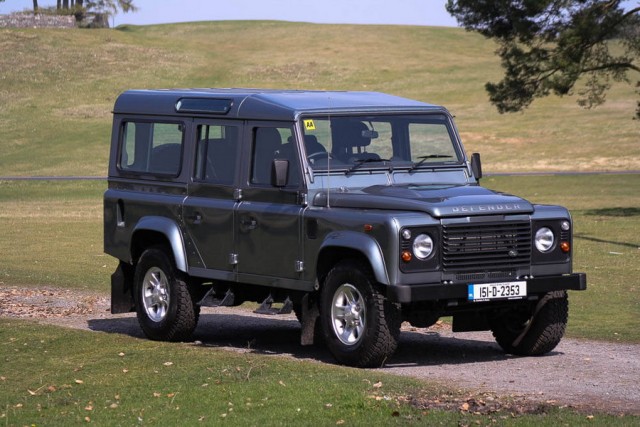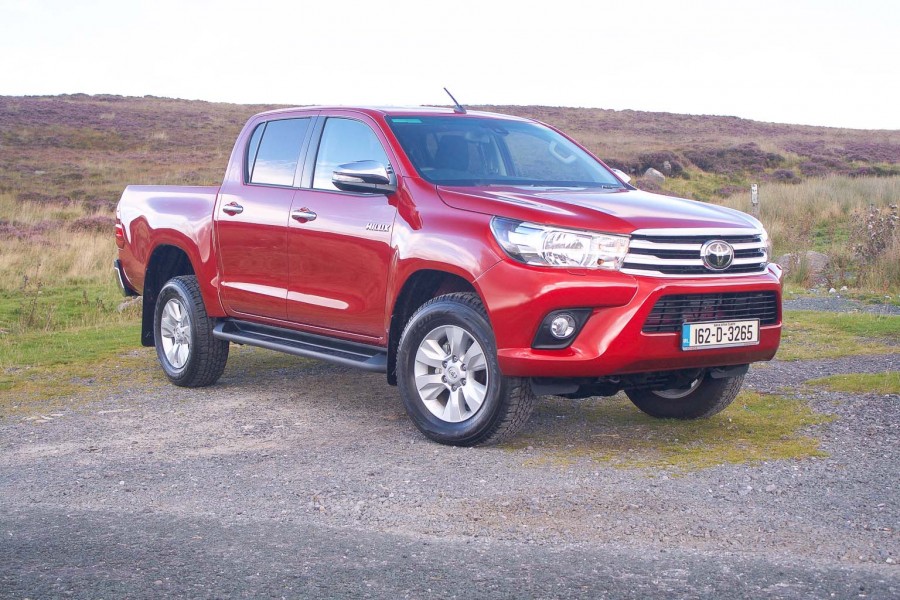Even in a world filled with SUVs, the Jeep Wrangler is something of a unique proposition. Following the end of Land Rover Defender production, only the Suzuki Jimny and Mercedes-Benz G-Class come close to offering anything as rugged. By no means perfect on the road, when it comes to tackling more rugged terrain, the Wrangler cuts the bull and gets on with it.
In the metal
We'll forgive you for needing to take a second glance to see if this is a different Wrangler to its predecessor. The styling changes may be subtle, but when you've got such a design icon on your hands, it's understandable that Jeep's designers didn't want to rock the boat too much. Modern touches include LED daytime running lights integrated horizontally into the front of the fender flares, while the fog lights are positioned in the lower bumper section. Other visual giveaways are the rear lights that appear stuck on, just like on the Renegade, and a windscreen that is more raked than before.
The Wrangler's styling is steered by its need to be robust and practical. If you don't love it at first sight, then it's not likely to grow on you. It's genuinely unique in that respect, and some of the smaller touches will make owners adore it. As with previous versions, it's possible to remove the doors (because why wouldn't you want to?!). Making this an easier task, the size of the Torx tool needed is stamped into the door, and there's a grab handle on the inside to help you lift it off. A dedicated storage pocket for the door bolts is in the boot, too, so you don't lose them. Just four bolts need to be undone to fold the windscreen down.
There's the choice of three different roof styles: a fabric top with flexible soft plastic rear windows that rolls back, a three-piece hardtop that allows for the two forward sections to lift off targa-style and, following the car's launch, an electrically operated retractable fabric roof section in a rigid frame completes the offering. It is possible to remove these roof sections entirely, exposing a painted frame that continues to protect occupants in the case of a crash. The full-size spare wheel is still hitched to the side-opening tailgate behind, but is now positioned 300mm lower to improve rearward visibility.
Pulling the thin door shut behind you as you get in produces a reassuringly mechanical clink. The cabin came in for a complete redesign and is functional, but not lacking in some decent finishes. You sit upright and close to the windscreen, providing you with a commanding view of the bonnet and pontoon-style wheel arches. The keener-eyed Jeep aficionados will spot the detail on the steering wheel featuring the outline of the original three-spoke steering wheel from the Willys Jeep incorporated into the centre of it. Neat touches carry through the rest of the car, and there are eleven in total, but we'll let you discover the rest of them.
You sit closer to the door partly due to the broader-than-average transmission tunnel that accommodates a second selector for switching between two- and -four-wheel-drive modes and the low-range transmission. The seating position isn't as extreme as in a Land Rover Defender, but it's not exactly the lap of luxury. From an ergonomic perspective, everything is within easy reach and mostly features in the vertically stacked centre console. Higher grade models get either a 7.0- or 8.4-inch touchscreen display that runs the Uconnect infotainment system and is smartphone compatible. While Jeep made a point of providing plenty of slots and spaces to store your handheld device, it stopped short of making its smartphone mirroring systems wirelessly connected.
Driving it
Choosing to make the Wrangler such a capable vehicle at off-road driving does result in something of a compromise when it comes to driving on-road. It sticks to a tried-and-tested body-on-ladder-frame chassis design with five-link suspension and live axles front and rear. If you plan on cruising around suburbia in your Wrangler, then you won't mind speed humps thanks to its generous suspension travel. But it's that same suspension that sees the Wrangler come undone when you try to drive it with any vigour through a series of bends. The body leans and its steering more often than not requires more than one stab at picking a line. With 3.24 turns from lock-to-lock, you get a bit of a workout driving it. Not helping matters is the fact that it seems as if the first bit of that lock appears to do nothing. Having pushed the Wrangler to its limits on some pristine Austrian roads, we wouldn't recommend trying to be a hero in one. The four-door model with the benefit of a longer wheelbase does bring some stability to the driving experience, which is worth the added cost alone before getting into the practicality it provides.
The 2.2-litre four-cylinder diesel gets an eight-speed automatic transmission and it is markedly more refined than the previous generation engine. Gear changes are smoother with the gearbox reacting better to throttle inputs, too. With eight ratios, it does a positive job of keeping the engine in the right powerband and, once up to motorway speed, the engine is more settled than the ride. It might not be the silky smoothness we've come to expect from some premium SUVs, but it gives no cause for complaint, especially given what the Wrangler is capable beyond tarmac. It offers a choice of drive modes from rear-wheel drive, part- and full-time four-wheel drive, along with a low-range gear ratio for more serious off-roading. Switching between two- and four-wheel drive can be done on the move up to 72km/h.
What you get for your money
We won't know the pricing for the new Wrangler until closer to the car's arrival in Ireland, but we do know some of the features that will be on offer. Both the standard Sahara model tested here and more rugged Rubicon will be available in two- and four-door variants. These will ride on 17-inch wheels with the Sahara having the option of an upgrade to larger 18-inch rims. Additionally, the Sahara model can be upgraded with the luxurious 'Overland' pack to give it a more premium look inside and out. When the full pricing for Ireland is confirmed, this section will be updated.
Summary
There is little to rival the Jeep Wrangler, nor are there likely to be other cars on the shopping list of would-be buyers. Even though Jeep has brought some more refinement to the mix, it still feels more like it is an off-road vehicle that you can also drive on the road, rather than an SUV that can go off-road. Still an icon.

